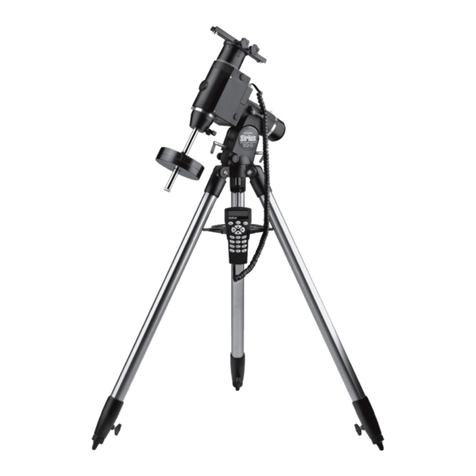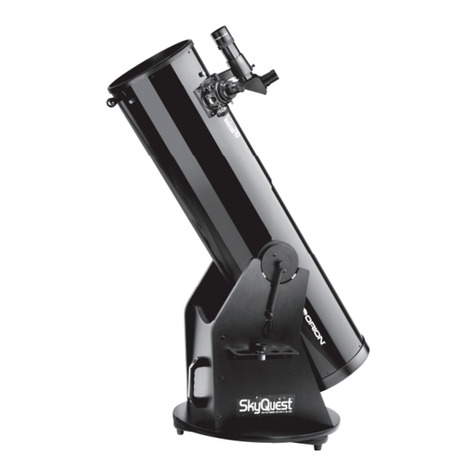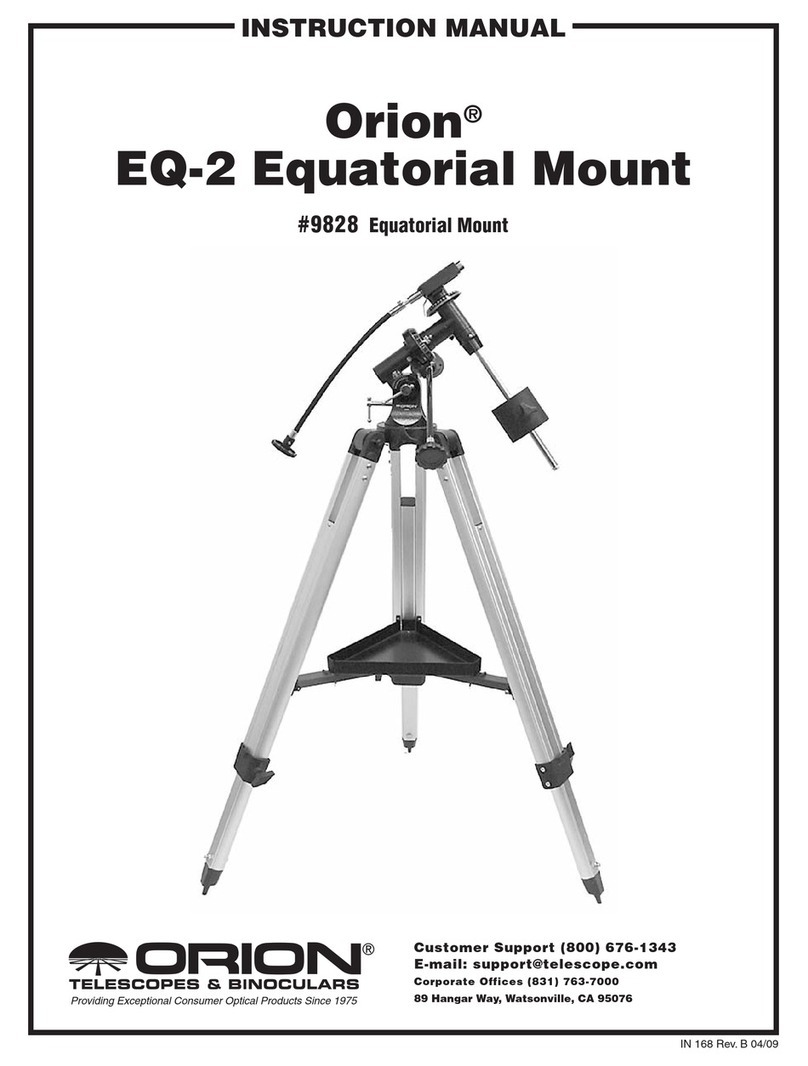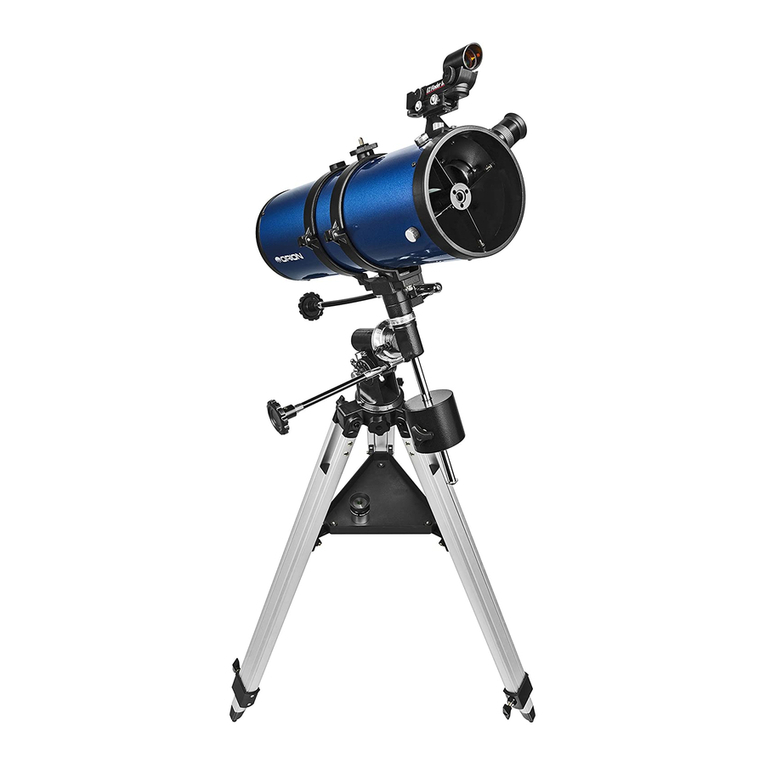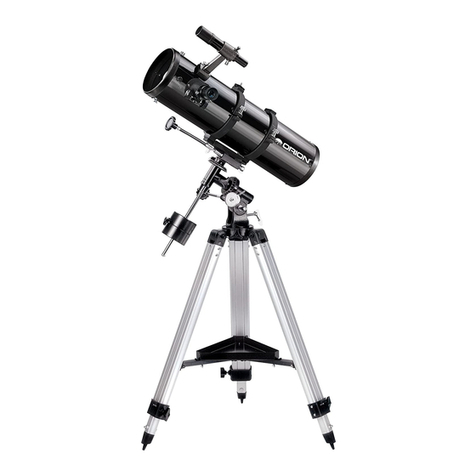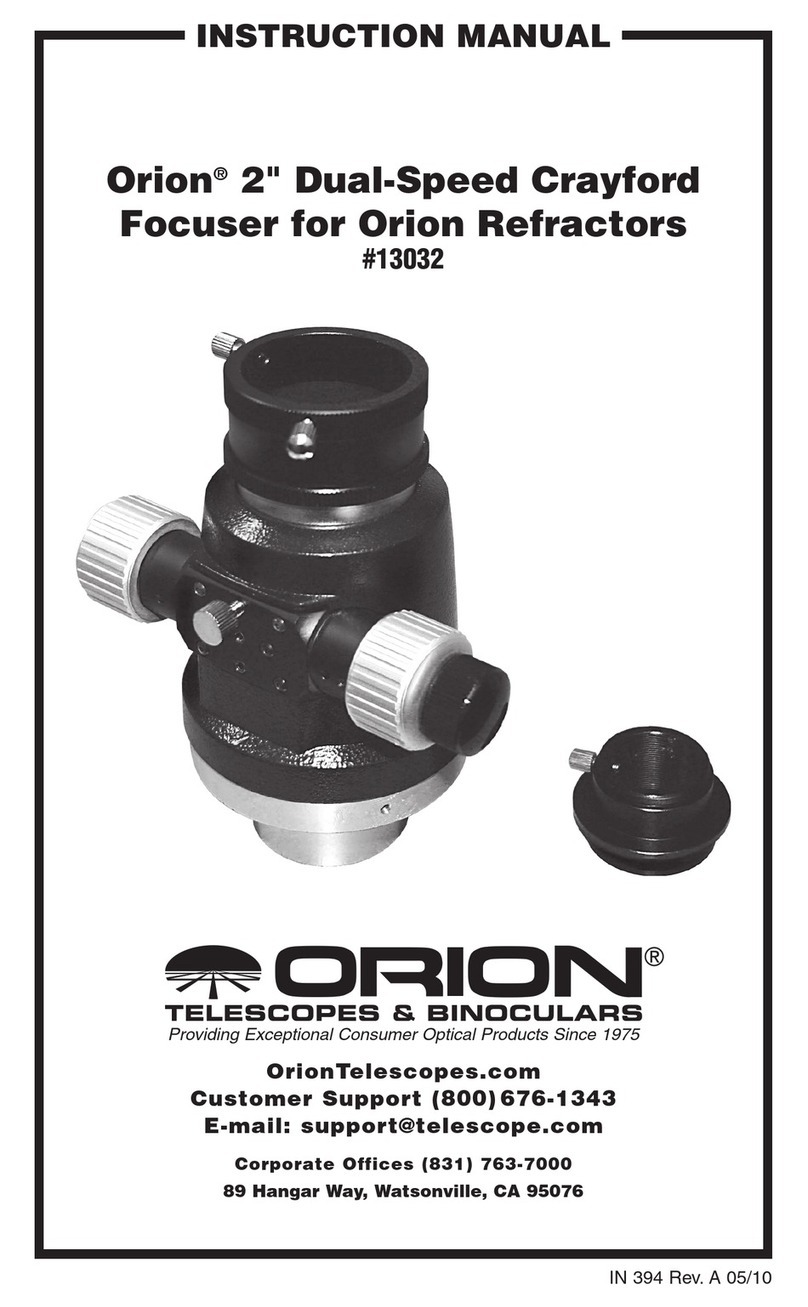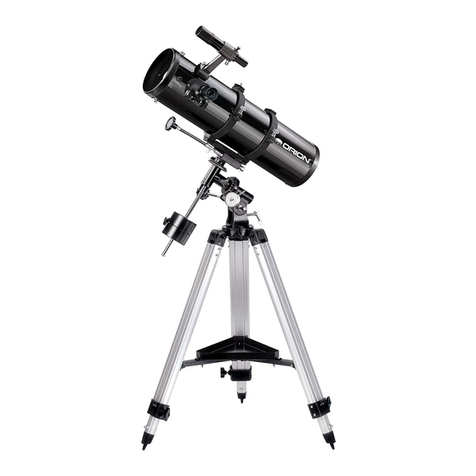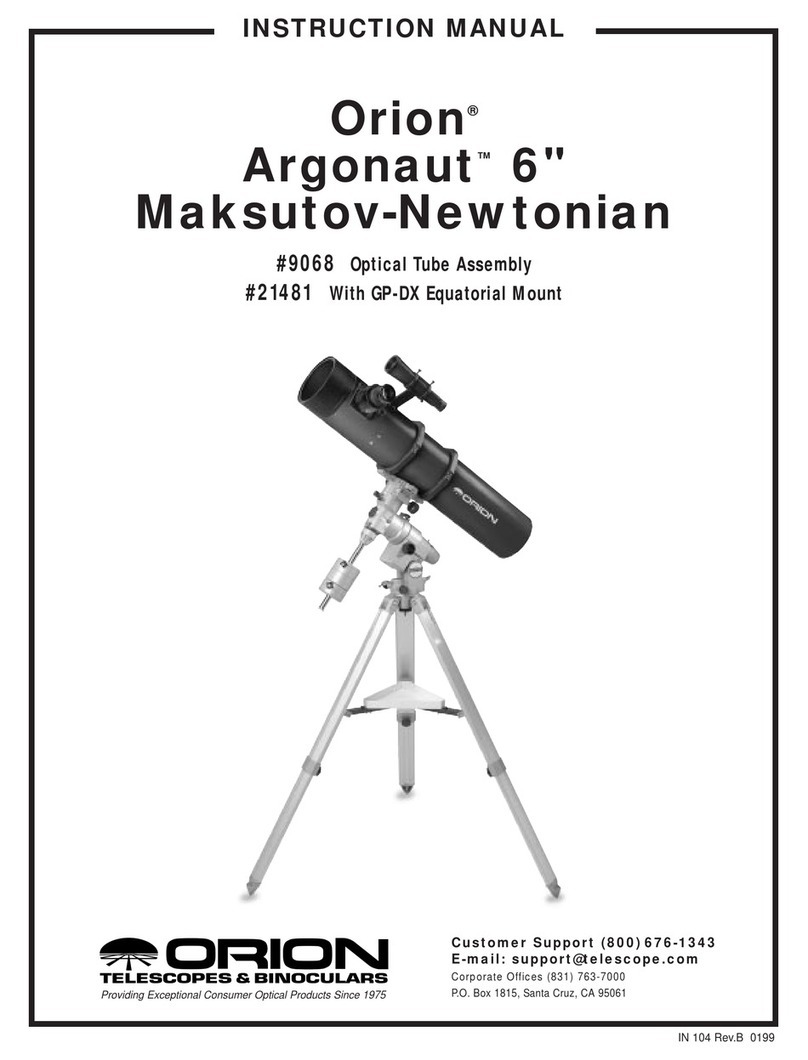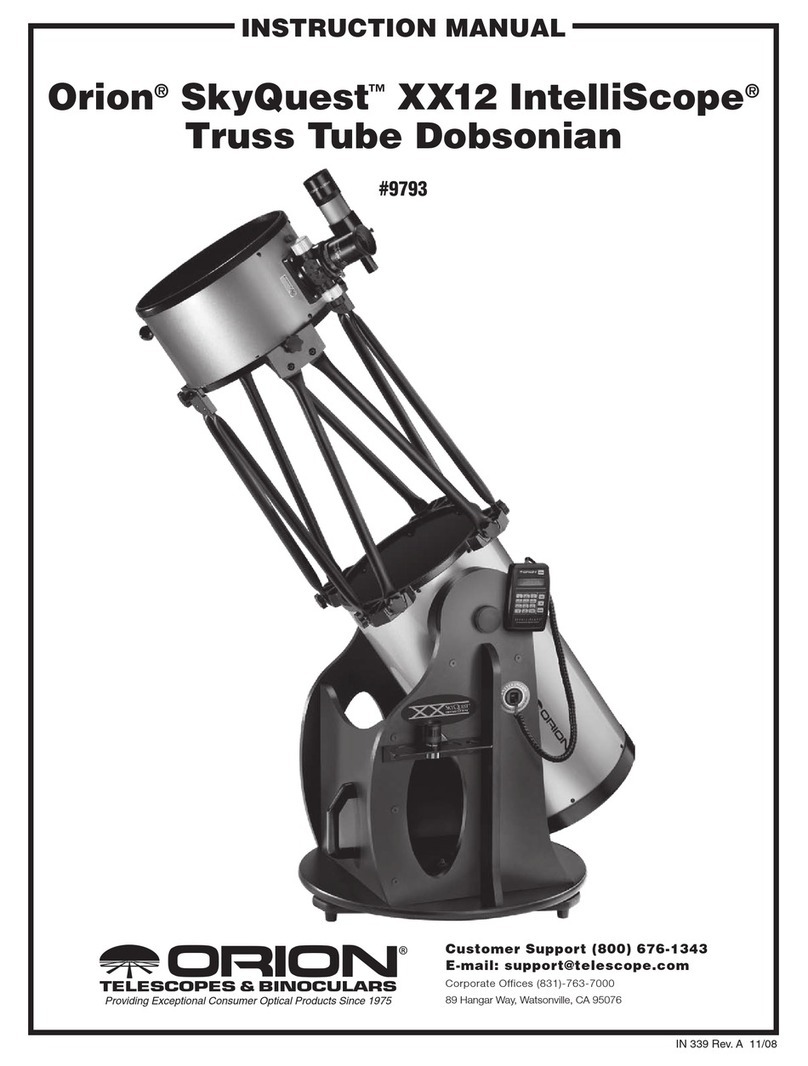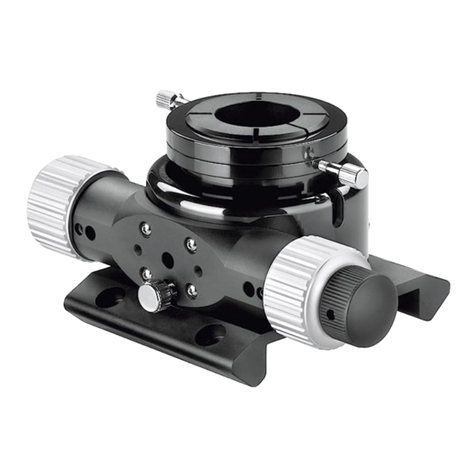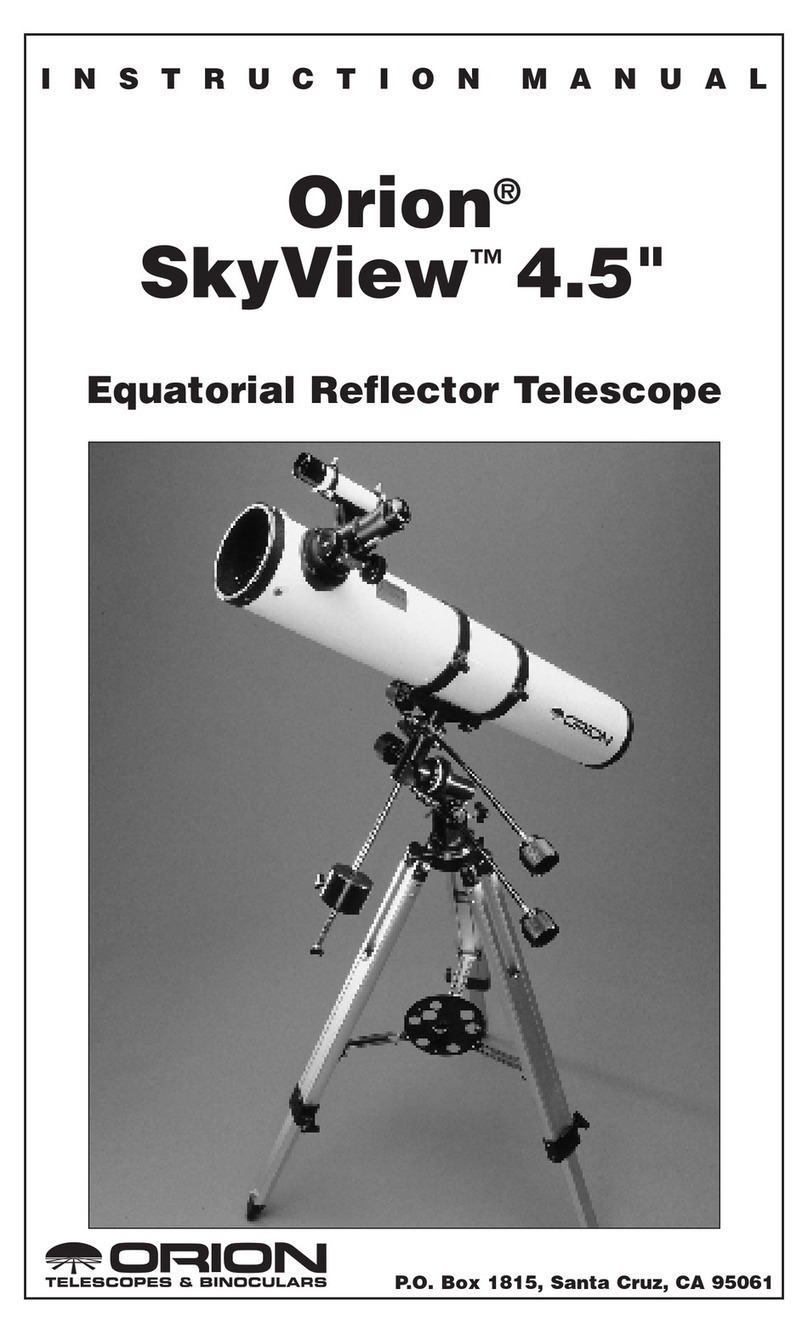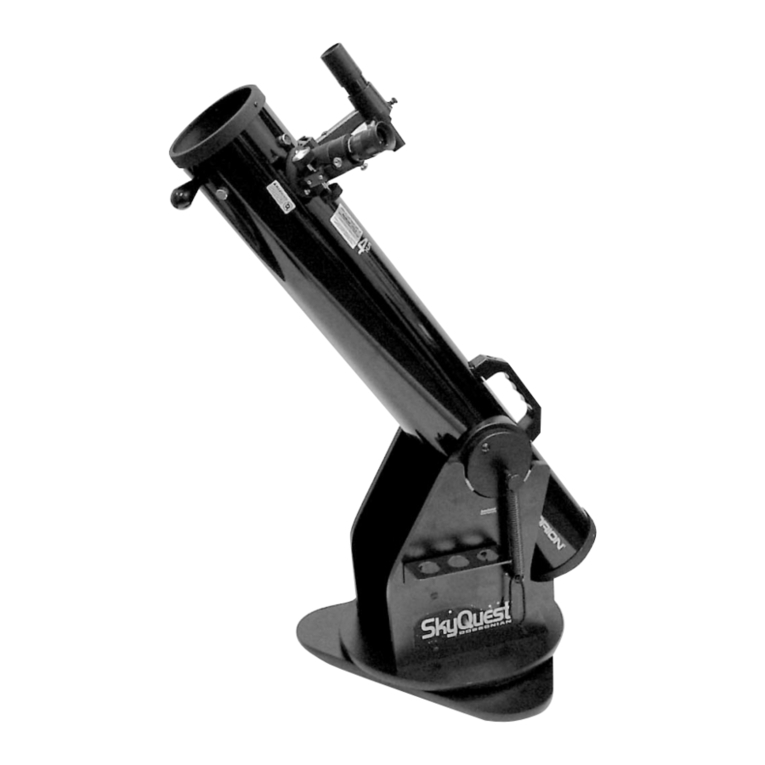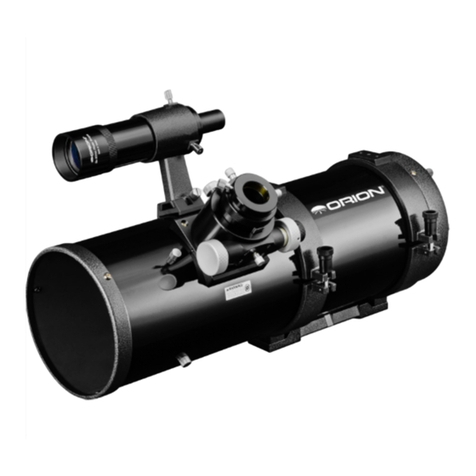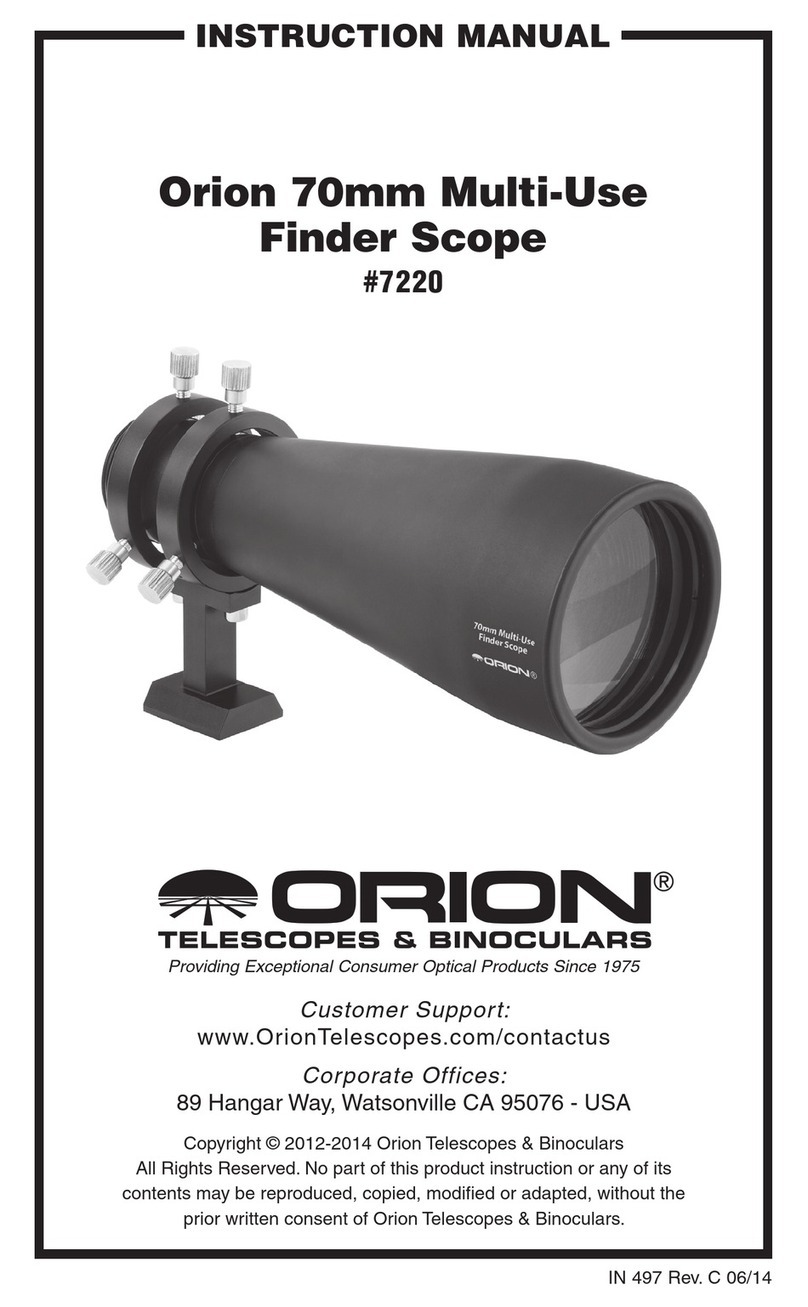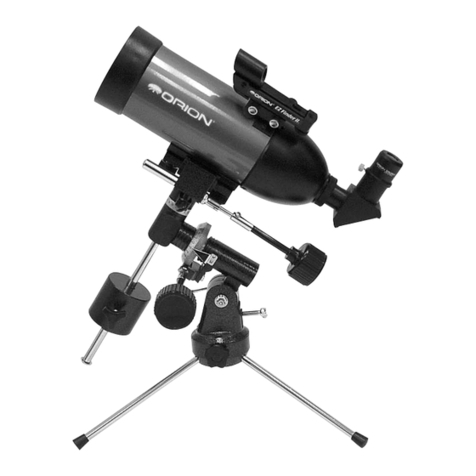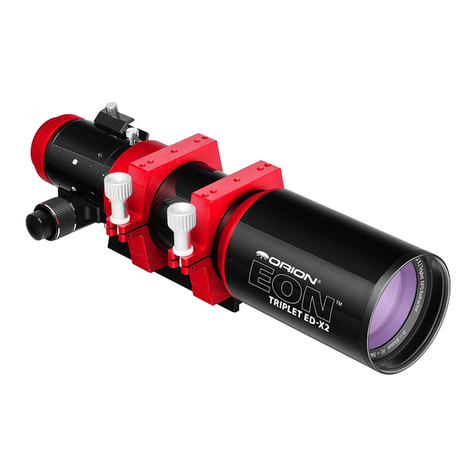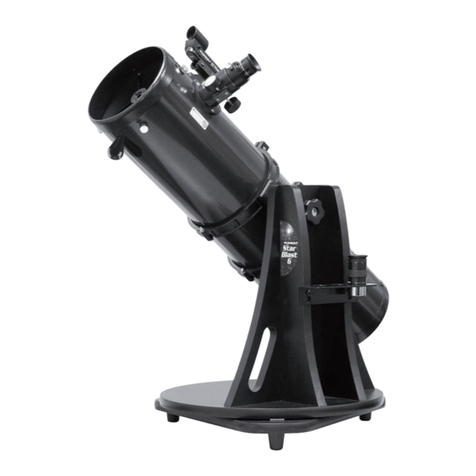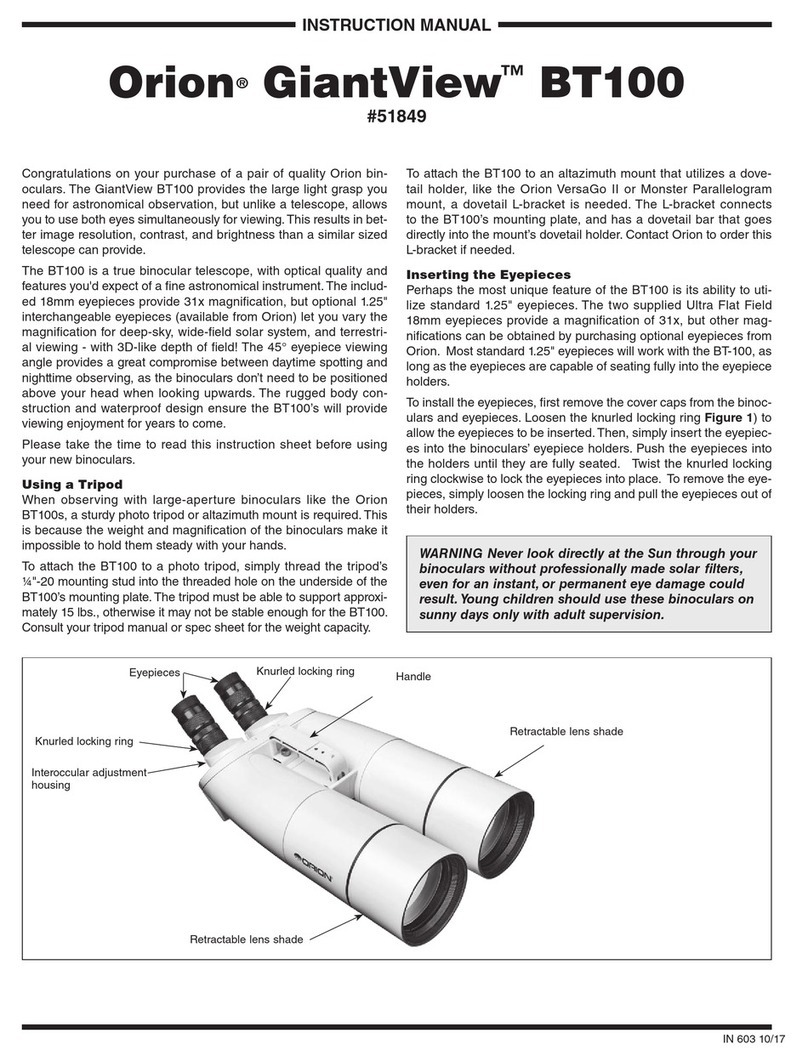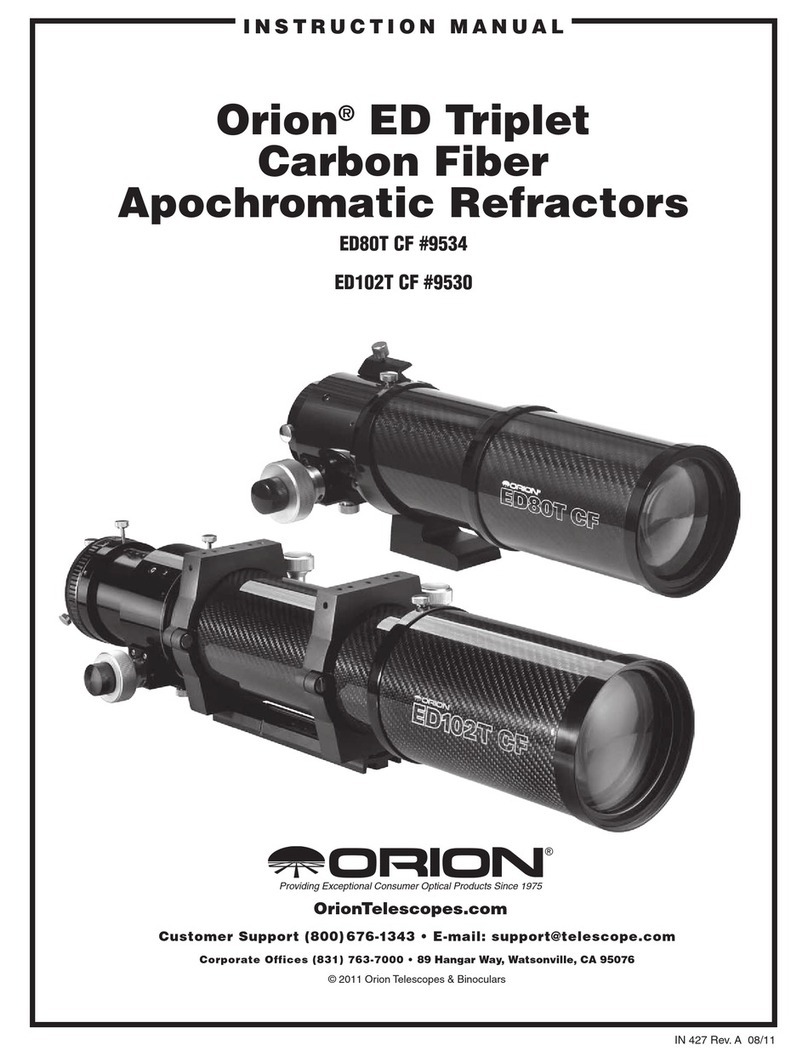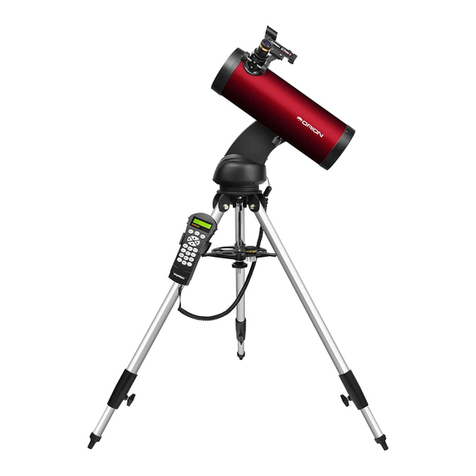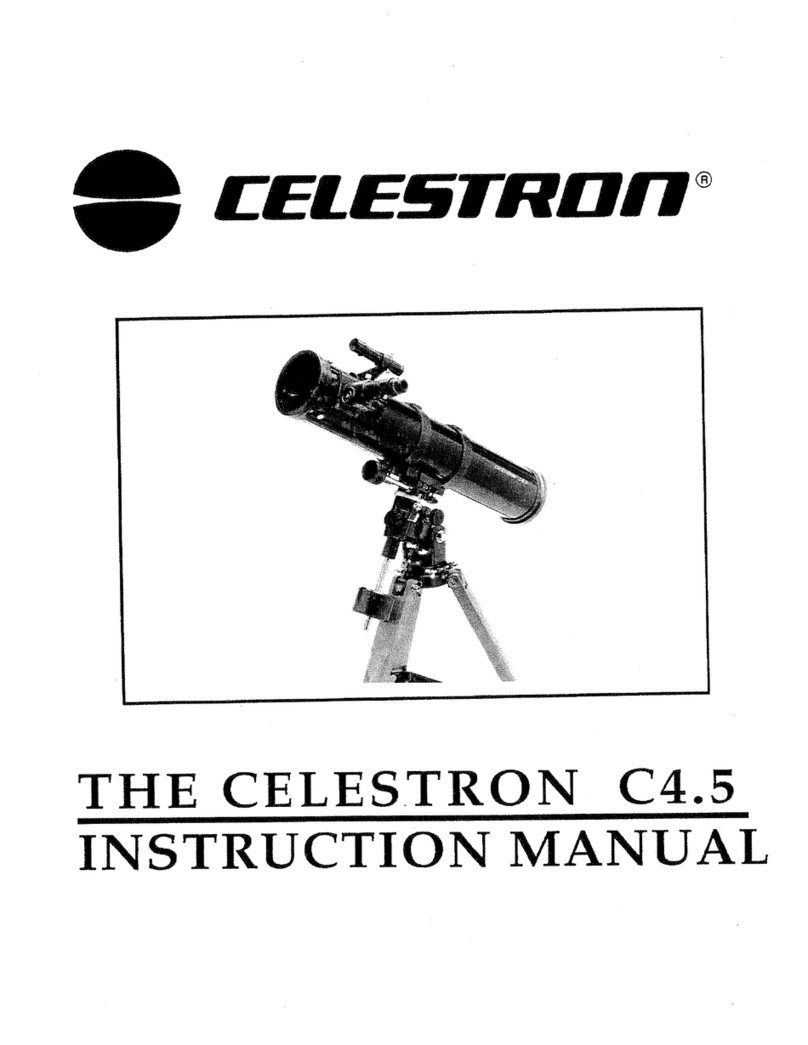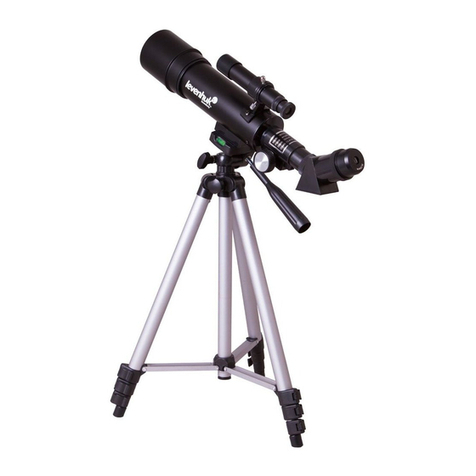
9
after several hours of total darkness. As your eyes become dark-
adapted, more stars will glimmer into view and you’ll be able to
see fainter details in objects you view in your telescope. Exposing
your eyes to very bright daylight for extended periods of time can
adversely affect your night vision for days. So give yourself at
least a little while to get used to the dark before you begin observ-
ing.
To see what you’re doing in the darkness, use a red-filtered flash-
light rather than a white light. Red light does not spoil your eyes’
dark adaptation like white light does. A flashlight with a red LED
light is ideal, or you can cover the front of a regular incandescent
flashlight with red cellophane or paper. Beware, too, that nearby
porch lights, streetlights and automobile headlights will ruin your
night vision.
Eyepiece Selection
Always start viewing with your lowest-power, widest-field eye-
piece. After you’ve located and looked at the object with a
low-power eyepiece, switch to a higher-power eyepiece and see
if the object looks better or worse. Keep in mind that at higher
power, an image will always be fainter and less sharp (this is a
fundamental law of optics). Many viewers use the lowest-power
eyepiece practically all the time! Naturally, higher magnifications
are desirable for viewing some celestial objects, but stay with low
powers when searching for an object and for extended viewing.
To calculate the power, or magnfication of a telescope, divide the
focal length of the telescope by the focal length of the eyepiece.
Telescope focal length ÷ Eyepiece focal length = Magnification
For example, if you’re using an Orion 10" Premium DSE, which
has a focal length of 1422mm, and a 26mm eyepiece, the power
would be
1422 ÷ 26 = 55x.
We recommend having a selection of three to six eyepieces of
different focal lengths so that you can choose the optimal magni-
fication, brightness level, and contrast for each object and for
different observing conditions.
Some exotic, extra-heavy eyepieces may cause enough imbal-
ance on the tube that you will need to adjust the counterweight
for optimum telescope balance.
7. Astronomical Viewing
How to Find Interesting Celestial Objects
To find celestial objects with your telescope, you first need to
become reasonably familiar with the night sky. Unless you know
how to recognize the constellation Orion, for instance, you won’t
have much luck locating the Orion Nebula. A simple planisphere,
or star wheel, can be a valuable tool for learning the constellations
and seeing which ones are visible in the sky on a given night.
A good star chart or atlas can come in very handy for helping find
objects among the dizzying multitude of stars overhead. Except
for the Moon and the brighter planets, it’s pretty time-consuming
and frustrating to hunt for objects randomly, without knowing
where to look.You should have specific targets in mind before you
begin looking through the eyepiece.
Start with a basic star atlas, one that shows stars no fainter than
5th or 6th magnitude. In addition to stars, the atlas will show the
positions of a number of interesting deep-sky objects, with differ-
ent symbols representing the different types of objects, such as
galaxies, open star clusters, globular clusters, diffuse nebulas, and
planetary nebulas. So, for example, your atlas might show that
there is a globular cluster sitting just above the lid of the “Teapot”
pattern of stars in Sagittarius. You then know to point your tele-
scope in that direction to home in on the cluster, which happens to
be 6.9-magnitude Messier 28.
The Moon
Viewing of the Moon, with its rocky, cratered surface, is one of the
easiest and most interesting ways to use your telescope. The
best time to observe our one and only natural satellite is during a
partial phase, that is, when the Moon is not full. During partial
phases shadows on the surface reveal more detail, especially
right along the border between the dark and light portions of the
disk. A full Moon is too bright and devoid of surface shadows to
yield a pleasing view.
The Planets
The planets don’t stay put like the stars, so you’ll have to refer to
charts published monthly in Astronomy , Sky & Telescope, or other
astronomy magazines to locate them. Venus, Mars, Jupiter, and
Saturn are the brightest objects in the sky after the Sun and the
Moon. Your Deep Space Explorer is capable of showing you these
planets in some detail. Other planets may be visible but will likely
appear starlike. Because planets are quite small in apparent size,
optional higher-power eyepieces are recommended and often
needed for detailed observations. Not all the planets are generally
visible at any one time.
JUPITER The largest planet, Jupiter, is a great subject for the
Deep Space Explorer .You can see the disk of the giant planet and
watch the ever-changing positions of its four largest moons-Io,
Callisto, Europa, and Ganymede. Higher-power eyepieces should
bring out the cloud bands on the planet’s disk.
SATURN The ringed planet is a breathtaking sight when it is well
positioned. The tilt angle of the rings varies over a period of many
years; sometimes they are seen edge-on, while at other times
they are broadside and look like giant “ears” on each side of
Saturn’s disk. A steady atmosphere (good seeing) is necessary
for a good view. You will probably see a bright “star” close by,
which is Saturn’s brightest moon, Titan.
VENUS At its brightest, Venus is the most luminous object in the
sky, excluding the Sun and the Moon. It is so bright that some-
times it is visible to the naked eye during full daylight! Ironically,
Venus appears as a thin crescent, not a full disk, when at its peak
brightness. Because it is so close to the Sun, it never wanders too
far from the morning or evening horizon. No surface markings can
be seen on Venus, which is always shrouded in dense clouds.
MARS The Red Planet makes its closest approach to Earth every
two years. During close approaches you’ll see a red disk, and may
be able to see the polar ice cap. To see surface detail on Mars, you
will need a high-power eyepiece and very steady air!
The Stars
Stars will appear like twinkling points of light. Even powerful tele-
scopes cannot magnify stars to appear as more than a point of
light! You can, however, enjoy the different colors of the stars and
locate many pretty double and multiple stars.The famous “Double-
Double” in the constellation Lyra and the gorgeous two-color
